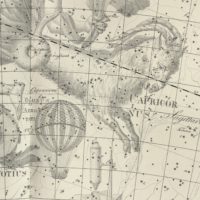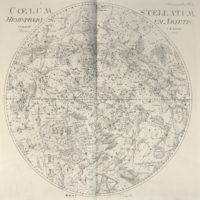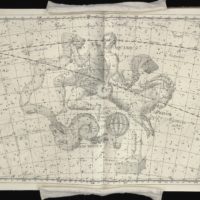As I worked my way through the evening’s observing list I came to an entry for the asterism ‘Hot Air Balloon’

This asterism found its way into my personal observing catalog from the one of the Saguaro Astronomy Club observing lists. These lists are an excellent resource for those who roam the starry sky, sort of an ultimate best-of list. These lists are one of the many sources I pulled together when creating my own giant list of where to aim my telescope.
So often I find surprises in my own database among the thousands of objects that I have dumped in there over the years.
Asterisms are simply odd patterns of stars that form memorable groups, but are not necessarily real clusters or other stars that are physically associated with each other. Many of these are well known such as The Coathanger, the Diamond Ring around Polaris, or The Stargate.
When I wandered through the coordinates listed from the Balloon I found a pretty starfield, but nothing that stood out as a recognizable shape, much less a balloon. I wrote down a few comments on the area and a note to myself to look this up later. What is The Balloon?
The next day as I finished up transcribing my observing notes I did just that. I looked it up. In the process rediscovering a lost memory and a lost constellation. Something I had known, though paid little attention to.
The Globus Aerostaticus or Hot Air Balloon is an obsolete constellation, one of the innumerable constellations that various cartographers included in the night sky before the IAU stepped in to end the mess and standardize the 88 constellations we use today.
Most of the modern constellations we use have been handed down from the Greek traditions, those found in Ptolemy’s Almagest. Orion, Scorpio, Taurus and the other so familiar constellations are found in the Almagest. When European explorers mapped the southern sky they added a few more to fill the southern heavens and complete the map. Lacaille and others added Microscopium, Horologium, Tucana, and more while charting the southern sky.
There remained some dark spaces between the major constellations, regions of the sky without memorable patterns of bright stars. In these empty places on the map confusion abounded. Many cartographers took these bits of caelum incognita as a chance to leave their own mark on the sky when drawing new maps, creating constellations like Noctua, Machina Electrica, or Custos Messium. Indeed, it is a long list of now retired constellations.
You can understand why the IAU put an end to it in 1930 and formalized a standard list of constellations with well defined boundaries.
With all of that in mind I return to Globus Aerostaticus. This area on what is now the west end of Piscis Austrinus is notable for a complete lack of notable stars. Even from my driveway where the Milky Way stands bright overhead I could not pick out a single star.
In the telescope however a different scene appears. Changing the eyepiece for a low power, wide field provides a rich field to sweep.
There is a notable stream of stars that leads south from Zeta Capricorni, a field rich in 6-8th magnitude stars that stand in an otherwise notably sparse area of the sky. The result makes this obsolete constellation worth visiting if you have a little optical aid to enjoy the area.
Globus Aerostaticus was invented by Jérôme Lalande in 1798 to honor the Montgolfier brothers who were building and flying hot air balloons at the time. The dream of flight was just becoming reality, a truly momentous idea that must have seemed worth preserving. The constellation found its way into Johann Bode’s 1801 great atlas of the sky Uranographia, thus becoming somewhat standard for the day.
The sky is filled with so much history, a reflection of our need to map and explore. The patterns of stars is the material of myths and legends, preserved and handed down over the millennia. Any bright pattern in the sky has not only a story associated, but many stories, as many as there are cultures that looked up and placed legends in the sky. Even the dim places in between have stories to learn.
If you want to visit Globus Aerostaticus you can turn your telescope to the region around 21h 30′ right ascension and 25° south declination. Another way to find the region is to sweep south from the bright star Zeta Capricorni to around Theta Piscis Austrini. If you truly want to go retro try using the plate from Uranographia included above to find your way.



